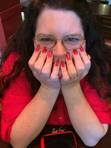Learning Craft from Children's Books
I remember years ago someone imparting the advice that if you need to do research on something, start with books written for children. They'll give you the basics which might be as much as you need to know, but if not they will at least make the subject understandable so you can pursue it more easily.
I was reminded of that advice a few weeks ago when I picked up a book I am supposed to use with my Jr. High ELA classes. It's called How to Read Literature Like a Professor: For Kids.

Full confession - my husband bought a copy of the original How to Read Literature Like a Professor years ago. It sat on a shelf that I passed many times a day. I often thought I should read it. I never did. Now I wish I had.

As I was reading the children's version to prepare to teach lessons from it, I realized that many of the points made for children are a good craft reminder for writers.
The Amazon blurb says:
In How to Read Literature Like a Professor: For Kids, New York Times bestselling author and professor Thomas C. Foster gives tweens the tools they need to become thoughtful readers.
With funny insights and a conversational style, he explains the way writers use symbol, metaphor, characterization, setting, plot, and other key techniques to make a story come to life.
As I read that, I was amused to think that some writers (like this one) may benefit from a reminder of what we are doing.
I'll digress for a moment to talk education. As a teacher, I usually deplore the kinds of questions on standardized tests that ask about the author's purpose or author's craft. It seems futile to ask a 12 year-old to try to step inside the mind of an author to figure out what they were trying to accomplish. I could go on at length with some ridiculous examples, but that doesn't help us become better writers. The reason I bring it up is that this book, in helping students understand what a writer is attempting, can also help writers better understand what is behind many of the things we do intuitively.
I really do believe that writers who are avid readers naturally absorb many of the tenets of storytelling. But I also believe that it's good to sometimes stop and reflect on what we are doing and how we can do it better. This book actually helped me to be more aware of what I'm doing when I write. And if I'm aware, I can be more intentional.
Do you ever turn to children's books for research?
Do you consciously use literary devices such as allusions, symbolism, metaphors, motifs, imagery, etc. when you write (or does it seep in there unconsciously)?
FYI - If you prefer an adult take on this, Here's a link to 45 Literary Devices and Terms That Everyone Should Know.



